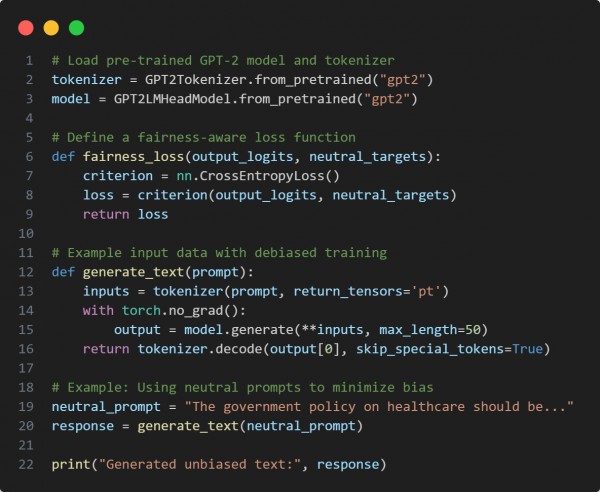Yes, ensuring bias-free output in a generative AI model for political content involves dataset balancing, adversarial debiasing, and fairness-aware loss functions. Here is the code snippet you can refer to:

In the above code, we are using the following key points:
-
Uses a fairness-aware loss function to reduce bias in model outputs.
-
Implements neutral prompts to guide unbiased text generation.
-
Leverages pre-trained GPT-2 while applying debiasing techniques.
Hence, bias-free generative AI for political content is achieved through dataset balancing, fairness constraints, and prompt engineering.
 REGISTER FOR FREE WEBINAR
X
REGISTER FOR FREE WEBINAR
X
 Thank you for registering
Join Edureka Meetup community for 100+ Free Webinars each month
JOIN MEETUP GROUP
Thank you for registering
Join Edureka Meetup community for 100+ Free Webinars each month
JOIN MEETUP GROUP